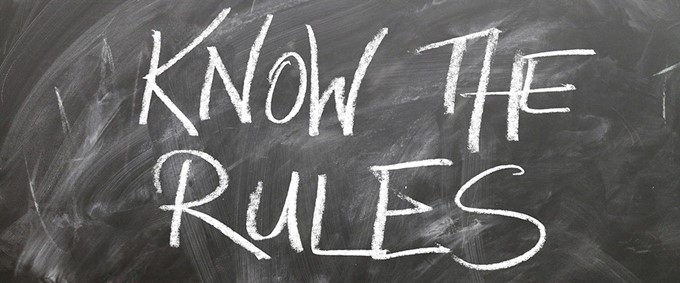
Each of us has a unique approach to life. We have developed individualised reactions to situations in which we find ourselves. It is not really helpful for me to think of how, if I were some other person, I would do something in my particular way because I am not that other person.
Throughout the last two hundred years, researchers have been trying to come up with a way to predict individual behaviour by cataloguing personality differences.
More recently, we find complex personality tests that are very long (sometimes over 500 questions) which result in all sorts of labels. For example, we may find out where we fit into Cattell’s “16 Personality Factors” or, in another famous test, how we compare to inmates (abnormal) or visitors (normal) of a Minnesota mental health institution. Unless we are worried about our sanity, these studies and labels usually are not relevant to us.
Researchers got themselves into a bother by trying to be predictive. That is, “ If we know enough data about a person, we can, with great accuracy, predict how that person will react! ” The problem very soon became apparent that there are so many factors
determining and affecting human behaviour that, to be exact, one needed to cover every possible factor. After a personality test, the researcher found that they could still not be sure of what the “subject” would do. Hence, even more tests were administered.
So why all the interest? It is because we are aware that the more we know about ourselves and others, the better are our chances of successfully relating and communicating. No quality actor would go into a play without first finding out about the character which they are to portray. Whilst the script may be clear and concise, the method of presentation is the key to a good performance.
When we wish to relate to others, we need to know our strengths and weaknesses as well as our audience’s hot and cold buttons.
There are many good and powerful personality and profile tests available (eg. Myers-Briggs and DISC). However, for some reason, the results are rarely actually utilized in the team or business environment. When I was overseas at an American Division One university, the head football coach mentioned how they use the DISC. I asked him do his coaches differentiate when talking to 2 linemen whether they are D or S. He admitted that once on the practice field, that information is never used.
My experience is that coaches, players and business people, after being presented with the logic of my profile and had their players, coaches and staff profiles presented in an open meeting, continually use the terms (“Oh yes, he is a mozzie”; “Those thinkers find it hard to open up.” or “I have to remember not to go into my enforcer mood right after the game.” Leigh Matthews and Matthew Hayden have devoted chapters in their books about its use.
I believe the reason could be that my profile was written with the purpose of improving performance via self-understanding. The other tests are seen as useful information. To be honest, the two tests mentioned above give far more feedback data and specificity than my profile. Perhaps that is another reason that people apply my profile as it is seen to be user-friendly because it is relatively basic and simple. Also, my profile is a character profile rather than a personality test. I have used a mixture of old Greek thinking with modern common-sense observations that I have found useful in helping people understand their idiosyncrasies as compared to others’ characteristics.
Personally, I believe these “tests” should be descriptive (that is, what are our natural tendencies to react to various situations?) rather than prescriptive (what people most certainly will do). Also, there is no such thing as a good or poor profile. We are all different and should be who we are and not whom others think we should be.
The purpose of this short article is not to try to push my profile (I have already mentioned that there are very good ones on the market), but rather to show how these can be better used for performance effect. Obviously, I am more conversant with my created profile than others.
Basic individual differences: (extracts from my second book – “Managing Yourself and Others”)
Firstly, there is the external versus internal focus. The externally focused person is concerned with other people’s reactions to him/her. This individual likes being the centre of attention, leading, directing action, speaking and being involved with others. Examples are politicians, entertainers, high profile business people and entrepreneurs. On the other hand, there is the internally focused person who prefers thinking, reflecting, planning, feeling, listening and following. Examples are philosophers, isolates and stereotypical professionals who attend to books, ledgers and laws more than to people. A general rule of thumb, I have found, is that externally focused individuals have a better aptitude for sales and marketing than internally focused people do. Conversely, the internal focus is more appropriate for client-service type activities than is the external focus. However, there are many successful exceptions to this rule of thumb.
Secondly, we need to include the level of structure (or lack thereof) within which a person is comfortable. Some hate structure. They are in, what I term, the flexible group. They “fly by the seat of their pants”. Rather than follow conventional methods, they prefer to “reinvent the wheel”. They are inductive and go from the big picture to the details. They do not like to prepare or plan, but actively to become involved in things as soon as possible. They are very flexible in that they don’t resist others or their opinions. They are not goal centred but are process centred. They have trouble following through and doing paperwork and prefer interrelating with others. These people generally ask the questions “ Why ?” and “ How ?” (rather than “ What ?” and “ When ?”).
On the other hand, some people need structure for either support or reasons of dominance. They are deductive – they go from a detailed base to the big picture. They prefer rules and try to be “right”. They are comfortable with statements such as “That is not the way it is done”, “We’ve always done it that way” or “Give me a list of reasons why I should change”. They are task and goal oriented. They are more concerned with results (i.e. “bottom line”) than they are with how those results are obtained. Strategies and plans (at which they are quite good) are viewed as a means to an end. They are achievers and list “completers”. These people generally ask the questions “What?” and “When?”
When the External / Internal focus is mixed with the Flexible / Structured focus, we get four categories of people. Into these we can fit others and ourselves and, hence, develop suitable methods of enhancing relationships; thus avoiding those natural irritants that non-compatible personality types can engender. My experience is that this awareness increases our social skills and empathy, which in turn improves our sales, client service and other people related abilities.
This is not the place to go into more detailed differences between Mozzie, Enforcers,
Thinkers or Feelers or the various combinations of these.
A salesperson needs to know if a client wants details or big picture; the coach needs to understand how the athlete learns and retains data; the director knows how different actors relate to their parts differently; the parents have to realise how their various children learn to read in different ways; etc. A coach once said, “I do not coach baseball players, but I coach young men in baseball uniforms.” What he meant was every person on his team was an individual with unique needs, methodologies, learning styles and success strategies.
A manager once said to me that he had communicated to staff (he had put a notice up in the staff room). I said, “No, you told them.” He thought telling was communicating. He told them in a way that worked for him and assumed that would be the same for all. How wrong he was! I knew a coach who had played at the top international level who was trying to get an athlete to go about things the way he did it and unintentionally hampered that athlete’s progression. When another coach came along and allowed the athlete to use his unique way of preparing, that athlete ended up playing at the top level for over a decade.
A team psychologist once told me how many players on a team were not good problem solvers and this was backed up with results from a problem-solving test. However, when I enquired, it turned out the players were like me and did not handle isolated details well without context (they were inductive). He said anyone knows that to problem solve, one first gets all the data and then sorts that data out into priorities followed by a solution. I said “no”, that was how he did it. The players were given stats and short video segments of opponents and told what this meant, but the “flexible” players were bored and paid little attention. In fact what the players needed was to watch the video in context and asked what they saw and what they got from it. The sessions became shorter but far more performance improvement ensued.
To summarise, it is very useful to get information on team/staff differences, but it is necessary to ask how that data can be used for better communication and performance. It needs to be a daily and continual utilisation. Otherwise, the exercise has been a waste of money. When I present my profile, it is done with the sole purpose of helping people not only understand themselves and others better but to use that information to improve performance or perhaps to learn why current strategies are hindering (I call them handbrakes to performance) their success.
Previous Newsletter Articles
Business Tips
HR Information
Contact Us
1300 022 270
enquiries@myabbs.com.au






